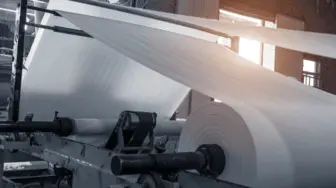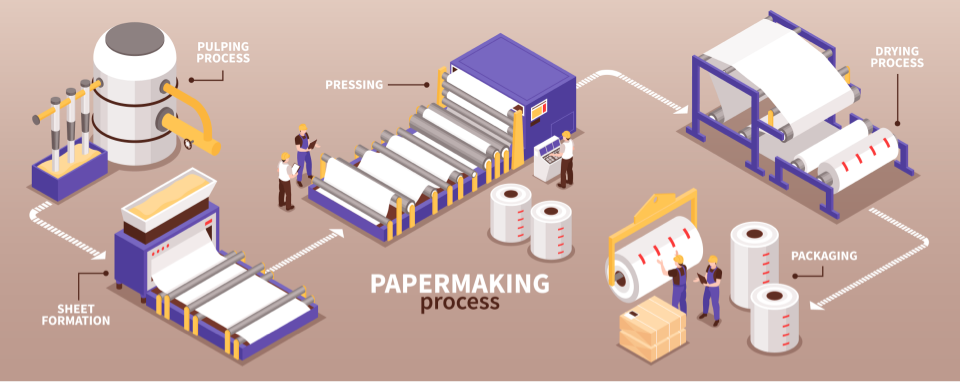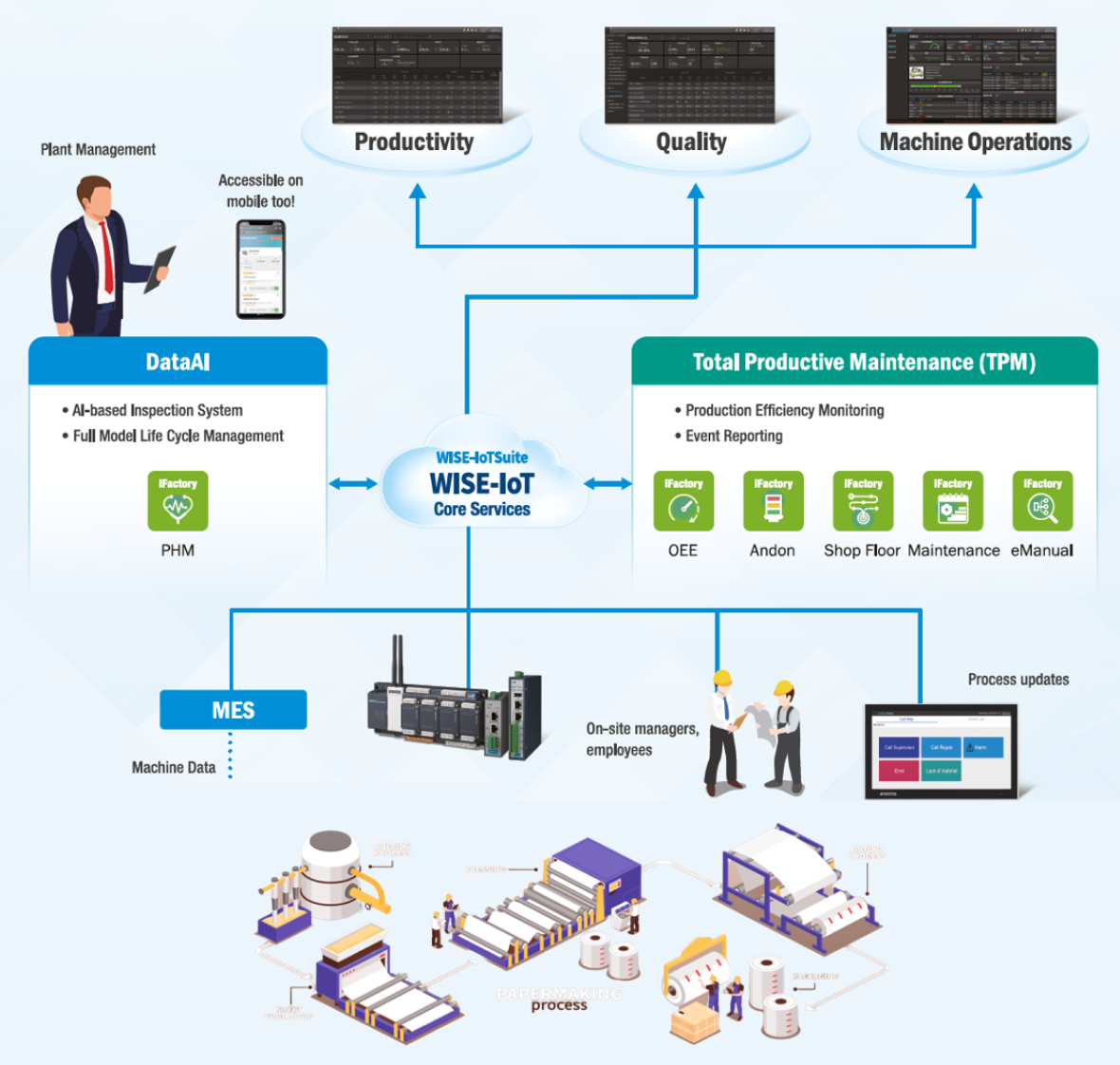Pulp & Paper Industry 4.0: Greener Digital Manufacturing
The global pulp and paper industry is facing both challenges and opportunities. Under the influence of the rise of digital media and network communications, demand for packaging materials and tissue products continues to grow, while the newsprint market is gradually shrinking. Faced with increasingly fierce global competition and policy pressure, constantly changing market and consumer demands force the industry to innovate in response. Innovation is not limited to services, products, and processes, but also encompasses business models, education, and workforce training. The pulp and paper industry has enormous digitalization potential and should not view it as a challenge, but as an opportunity to drive growth. Digitalization will help the pulp and paper industry create new opportunities and achieve a more efficient and competitive future.

Challenges in the Pulp & Paper Industry
- 01
Market Shifts and Cost Pressures
The pulp and paper industry has very low profit margins, making production costs a key factor in profitability. One way to increase market share in the industry is to provide value-added services that competitors cannot offer. Brand owners are the ultimate decision-makers for packaging, wanting better, faster, more customized, and safer products, but without paying more. Overall packaging production costs are affected by quality, productivity, and raw materials.
- 02
Manufacturing Environment Control
The pulp and paper industry has many harsh process conditions, such as corrosive pulp requiring extremely high pressure, temperature conditions, corrosive chemicals, and very smooth, fast rolling operations. Therefore, process control is key to optimizing factory operations and performance, and is crucial for stable and accurate control and measurement under harsh process conditions. The demands of the paper, fiber, and packaging industries are increasingly high. The primary question is how to increase output and gain competitive advantage to win customers.
- 03
Sustainability and Environmental Challenges
Productivity and profitability under strict environmental guidelines are major challenges facing the pulp and paper industry. The pulp and paper industry faces increasing demands to reduce environmental impact and carbon emissions, with wood procurement gradually moving toward localized sustainable sources and recyclability. Therefore, it is necessary to continuously develop new technologies to provide effective wood utilization, increase the added value of raw materials and resource utilization, thereby reducing environmental impact.
- 04
Equipment Stability and Performance
The pulp and paper industry's business primarily uses various resources (including wood chips, clay, lime, dyes, chemical resins, and recycled paper) to manufacture wood pulp, paper, or cardboard. The demand for mechanical maintenance continues to rise. In addition to paper mills, waste paper recycling plants also place greater emphasis on process efficiency and machine reliability than ever before.

Pulp & Paper Industry iFactory
The pulp and paper industry has complex production processes that can be optimized and digitized through the Pulp & Paper Industry iFactory solution suite. Like the oil, gas, and mining industries, the pulp and paper industry has critical asset facilities that must be continuously monitored. If production lines are suddenly interrupted due to failures, it will affect quality and production efficiency.
Advantages
- 01
Achieve Safer Connected Production
- 02
Improve Energy Consumption Efficiency
- 03
Reduce Waste and Lower Error Rates
- 04
Improve Production Efficiency
- 05
Maximize Logistics Efficiency
- 06
Optimize Asset Performance
Solution Suite I.Apps

Overall Equipment Effectiveness (OEE)
Visual monitoring of OEE indicators and KPIs across the entire factory through data acquisition, aggregation, and machine utilization analysis. Easily achieve smart factory production efficiency management, improve productivity, review and analyze major losses, enhance equipment utilization, and effectively increase production capacity.

Smart Facility Sustainability Management
Real-time monitoring of environmental sensors and tracking energy consumption across the entire factory by category. Identify abnormal power consumption through real-time data from smart meters. FMS allows users to monitor energy consumption information and environmental safety, accurately estimate energy costs, optimize utility efficiency, and promote corporate FMS management strategies.
System Architecture for Pulp & Paper Industry

DFSI Co-creation Partners
Industrial IoT (IIoT) involves integrating big data, cloud, and AI applications. To align with this trend, Advantech collaborates with domain-focused system integrators (DFSI) to develop industrial applications (I.Apps).